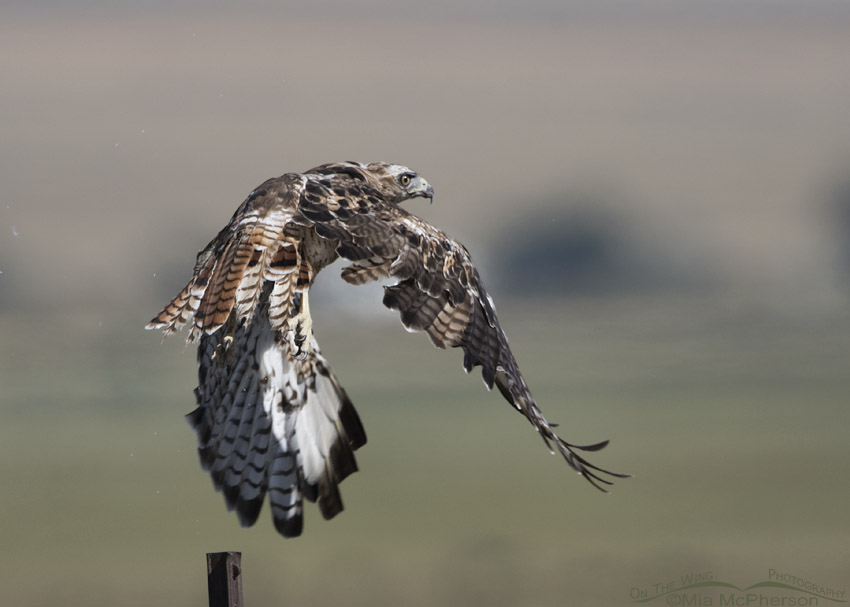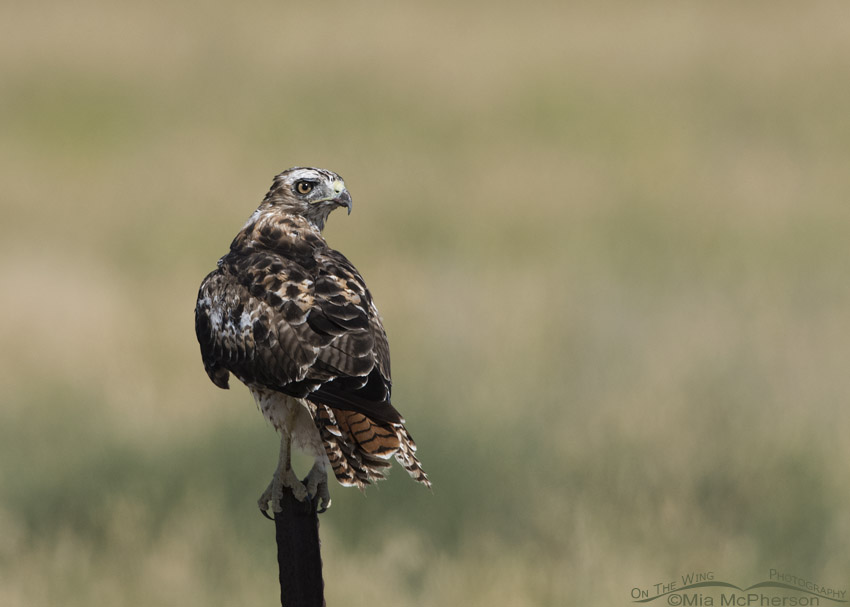 Rapid second pre-basic molt in a year old Red-tailed Hawk – Nikon D810, f6.3, 1/2500, ISO 400, Nikkor 500mm VR with 1.4x TC, natural light, not baited
Rapid second pre-basic molt in a year old Red-tailed Hawk – Nikon D810, f6.3, 1/2500, ISO 400, Nikkor 500mm VR with 1.4x TC, natural light, not baited
There are times I save photos that I have taken that might not be sharp or aren’t the best quality, sometimes it is for documenting a rarity, interesting behavior or because I find the subject fascinating but wasn’t able to take high quality images due to circumstances beyond my control, like photographing when the engine is still on.
I have an image in a book about birds in Pinellas County, Florida birds that makes me cringe every time I think about it because I was photographing a White-tailed Kite hovering over a fresh water lagoon with the sun behind it and the images were just awful but that was the first record of a White-tailed Kite in the county in over 90 years. So I allowed the use of a crappy image in that book for the confirmation of the record.
I also keep images of birds that look a bit messy because they are molting even if they aren’t up to my standards, like this one-year-old Red-tailed Hawk that was rapidly molting the end of July in 2015. Not a beautiful hawk in molt but still fascinating to me.
 Molting, ratty looking Red-tailed Hawk – Nikon D810, f6.3, 1/2500, ISO 400, Nikkor 500mm VR with 1.4x TC, natural light, not baited
Molting, ratty looking Red-tailed Hawk – Nikon D810, f6.3, 1/2500, ISO 400, Nikkor 500mm VR with 1.4x TC, natural light, not baited
The Red-tail was next to a country road and stopping was difficult because of traffic, as I recall a combine was coming up the road so all of the images I took were on the fly, no time to change settings or anything.
The head feathers are light on this hawk because they were bleached out by the sun but it was the messy, ragged looking tail feathers transitioning to what we normally see in a Red-tailed Hawk that caught my eye first.
I sent these images to Peter Pyle; author of the Identification Guide to North American Birds, biologist and bird expert, who has used a few of my photos for an article on molting birds in the ABA‘s Birding magazine and he wrote this about my hawk:
“For this RTHA, which is undergoing a rather rapid second-prebasic molt at a year of age. The two brown feathers in the right wing are the 4th and 9th secondaries (from the outside), typically the last secondaries replaced as I discuss in the article.”
 Flight image of molting one-year-old Red-tailed Hawk – Nikon D810, f6.3, 1/2500, ISO 400, Nikkor 500mm VR with 1.4x TC, natural light, not baited
Flight image of molting one-year-old Red-tailed Hawk – Nikon D810, f6.3, 1/2500, ISO 400, Nikkor 500mm VR with 1.4x TC, natural light, not baited
This photo is terrible but I wanted to include it because it shows the ratty looking tail of this molting Red-tailed Hawk so well.
Right now our Red-tailed Hawks don’t look messy but as the summer goes on I will probably find more ratty looking, molting birds like this one.
Life is good. Birds make it better.
Mia
Click here to see more of my Red-tailed Hawk photos plus facts and information about this species.


I agree with the others on this page…this is a really fascinating series of shots. The grungy part of molting season is something most of us don’t see very often. Thanks also for your narrative. It was very helpful.
If only my bad feather days looked so good. And allowed me to fly.
Great images, especially for being “on the fly.” Yes, poor birds do look a bit bedraggled but they will emerge once again in full living colour. Thanks for sharing.
I really love these images! Even a raggedy-looking Red-tailed Hawk in molt is something special. Truly a magnificent creature. Your photographs evoke that quality, Mia. Thank you for sharing.
Very cool images indeed. Very few of us see this.
Yes, the molt is oftentimes messy With feathers going and coming, they regularly have what I call bad feather days where they just can’t pull off that majestic thing. I’ve been delighted over the years to share molted redtail, Harris’ hawk and Kestrel feathers with folks so they can see the diversity and sheer beauty of the different kinds of feathers up close and personal. Amazingly, each is feather is slightly different, serving different purposes. My favorite feathers are the elegant white under-tail coverts, but YOWZER, they’re all just spectacular! Bear in mind that I’m totally, utterly and completely besotted with raptors (birds overall and critters, too)!
With feathers going and coming, they regularly have what I call bad feather days where they just can’t pull off that majestic thing. I’ve been delighted over the years to share molted redtail, Harris’ hawk and Kestrel feathers with folks so they can see the diversity and sheer beauty of the different kinds of feathers up close and personal. Amazingly, each is feather is slightly different, serving different purposes. My favorite feathers are the elegant white under-tail coverts, but YOWZER, they’re all just spectacular! Bear in mind that I’m totally, utterly and completely besotted with raptors (birds overall and critters, too)!
I’d sure like to see some of those molted feathers…the color patterns on them must be beautiful…
Very, very interesting series’, especially since few of us get to see this phase…usually we either see a fully feathered bird or pictures of one..I’ve never seen this phase before and am grateful to you for showing it…raggedy but interesting and beautiful….especially the rear shot…..